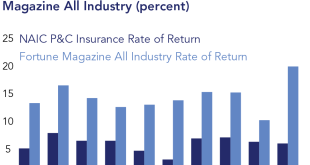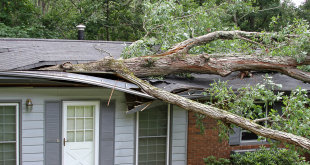The escalating home insurance crisis, fueled by climate change and increasing natural disasters, is leaving homeowners vulnerable and insurers hesitant. In response, the proposed INSURE Act aims to establish a federal backstop, similar to those used in other sectors, to stabilize the home insurance market and ensure access to affordable coverage. But is this the right solution, and what are the potential implications for homeowners, insurers, and taxpayers? This article will delve into the details of the INSURE Act, exploring its potential benefits, drawbacks, and the broader context of the home insurance crisis it seeks to address.
The Growing Home Insurance Crisis
Let’s face it, the home insurance market is in a bit of a pickle, isn’t it? It seems like every other day there’s another headline about rising premiums or insurers pulling out of certain areas altogether. What’s going on, and why should you care? Well, if you own a home, or plan to own one, you definitely need to pay attention.
Escalating Risks and Rising Premiums
Think about it: more frequent and intense hurricanes, wildfires, floods – it’s like Mother Nature is throwing a never-ending party, and nobody sent an RSVP. These events are driving up the cost of everything. Insurers are having to pay out more claims, which, in turn, means higher premiums for homeowners. It’s a vicious cycle, and honestly, it doesn’t seem to be letting up anytime soon. It’s got me wondering what’s next.
Insurers Retreating from High-Risk Areas
And here’s the kicker: some insurance companies are simply saying, “Nope, not doing it anymore.” They’re pulling out of high-risk areas, leaving homeowners scrambling for coverage. Imagine living in a coastal community and suddenly finding out you can’t get insurance anymore. What would you do? It’s a scary thought, and it’s becoming a reality for more and more people.
The Impact on Homeowners and Communities
So, what does all this mean for you, the homeowner? Higher costs, less coverage, and a whole lot of uncertainty. It’s not just about the money, though. It’s about the peace of mind that comes with knowing your home is protected. And when insurance becomes unaffordable or unavailable, it can destabilize entire communities, impacting property values and local economies. It’s a domino effect that nobody wants to see.
Understanding the INSURE Act
Okay, so here’s where the INSURE Act comes into play. It’s basically a proposed solution to this mess, a kind of safety net designed to catch us before we fall too far. But what exactly does it do, and how does it work?
Key Provisions of the Bill
In a nutshell, the INSURE Act aims to create a federal backstop for home insurance. Think of it like a giant insurance policy for insurance companies. It would provide a layer of protection in the event of major disasters, helping insurers stay solvent and continue providing coverage. The devil’s always in the details, of course, but that’s the basic idea.
How a Federal Backstop Would Work
So, how would this backstop actually work? Well, the details are still being ironed out, but the general idea is that the federal government would step in when losses from a major event exceed a certain threshold. This would help insurers pay claims and avoid going bankrupt, which, in turn, should help keep premiums more stable and coverage more available. It’s kind of like when your parents used to help you out when you were short on cash. Remember that?
Comparing the INSURE Act to Other Backstop Models
Believe it or not, federal backstops aren’t a completely new idea. They’re already used in other sectors, like terrorism insurance and flood insurance. The INSURE Act would essentially apply a similar model to home insurance, learning from the successes and failures of these existing programs. It’s like saying, “Hey, that worked over there, maybe it’ll work here too!”
Arguments for the INSURE Act
Alright, so why are some people all for the INSURE Act? What’s the big selling point? Well, proponents argue that it could bring much-needed stability to a market that’s currently teetering on the brink.
Stabilizing the Market and Ensuring Availability
The main argument is that a federal backstop would help stabilize the home insurance market, making coverage more available and affordable. By providing a safety net for insurers, it would reduce the risk of them pulling out of high-risk areas or drastically raising premiums. It’s all about keeping the system from collapsing, really.
Protecting Homeowners from Financial Ruin
Let’s not forget the homeowners! The INSURE Act could protect families from financial ruin in the event of a disaster. Without affordable insurance, a single hurricane or wildfire could wipe out everything they’ve worked for. It’s a scary thought, and the INSURE Act aims to provide some peace of mind.
Promoting Economic Growth and Community Resilience
And it’s not just about individual homeowners. A stable insurance market can also promote economic growth and community resilience. When people feel secure in their homes, they’re more likely to invest in their communities and contribute to the local economy. It’s all interconnected, you see.
Concerns and Criticisms of the INSURE Act
Now, before we get too excited, let’s take a step back and consider the other side of the coin. Not everyone is convinced that the INSURE Act is the answer. There are some valid concerns and criticisms that need to be addressed.
Potential for Moral Hazard
One of the biggest concerns is the potential for “moral hazard.” This is the idea that if insurers know they have a federal backstop, they might take on more risk than they otherwise would. It’s like knowing your parents will always bail you out, so you start making riskier decisions. It could lead to irresponsible behavior and ultimately undermine the entire system. Tricky stuff.
The Cost to Taxpayers
Then there’s the question of cost. A federal backstop would likely be funded by taxpayers, which means you and me. Some argue that it’s unfair to ask taxpayers to foot the bill for insurance companies, especially when there are other potential solutions. It’s a valid point, and one that needs careful consideration. Nobody wants to see their taxes go up, right?
Arguments for Alternative Solutions
And speaking of other solutions, some argue that there are better ways to address the home insurance crisis. Instead of a federal backstop, they suggest focusing on things like strengthening building codes, investing in mitigation efforts, and exploring innovative insurance products. It’s all about finding the most effective and efficient way to protect homeowners and communities.
Alternative Solutions to the Home Insurance Crisis
So, if the INSURE Act isn’t the only game in town, what are some of these alternative solutions we keep hearing about? Let’s dive in and see what else is on the table.
Strengthening Building Codes and Mitigation Efforts
One approach is to focus on prevention rather than just dealing with the aftermath. By strengthening building codes and investing in mitigation efforts, we can reduce the risk of damage from natural disasters in the first place. Think about it: a stronger house is less likely to be damaged by a hurricane, which means lower insurance claims. It’s a no-brainer, really.
State-Level Insurance Pools and Reforms
Another option is to create state-level insurance pools and reforms. These pools would provide coverage in high-risk areas where private insurers are hesitant to operate. They could also implement reforms to make insurance more affordable and accessible. It’s like saying, “Okay, if the federal government won’t do it, we’ll do it ourselves.”
Exploring Parametric Insurance and other Innovative Solutions
And let’s not forget about innovation! There are some really interesting new insurance products out there, like parametric insurance, which pays out based on specific triggers, like the intensity of a hurricane. These innovative solutions could help fill the gaps in the traditional insurance market and provide more tailored coverage. It’s like finding that perfect gadget you didn’t know you needed!
The Future of Home Insurance
So, where do we go from here? What does the future hold for home insurance? It’s a complex issue with no easy answers, but one thing is clear: we need to find a way to navigate the challenges of climate change and increasing risks while ensuring that everyone has access to affordable and accessible coverage.
Navigating Climate Change and Increasing Risks
Climate change is the elephant in the room, isn’t it? We can’t ignore the fact that our planet is changing, and these changes are having a direct impact on the insurance market. We need to find ways to adapt and mitigate these risks, whether it’s through stricter building codes, better land-use planning, or simply being more aware of the dangers we face.
The Role of Government and Private Sector Collaboration
It’s also clear that this is not a problem that can be solved by the government alone, or by the private sector alone. It’s going to require collaboration and cooperation to find the right solutions. The government can play a role in providing a safety net and setting standards, while the private sector can bring innovation and efficiency to the market. It’s a team effort, folks.
Ensuring Affordable and Accessible Coverage for All
Ultimately, the goal is to ensure that everyone has access to affordable and accessible home insurance, regardless of where they live or their income level. It’s a fundamental need, like food and shelter, and we need to find a way to make it a reality for all. Easier said than done, of course, but it’s a goal worth striving for.
In the end, the INSURE Act is just one piece of the puzzle. Whether it’s the right solution or not is still up for debate. But one thing is certain: the home insurance market is in crisis, and we need to find a way to fix it. It’s going to take creativity, collaboration, and a willingness to think outside the box. So, what do you think? Is the INSURE Act the answer, or do we need to explore other options? The future of home insurance depends on it.
 seeme
seeme




